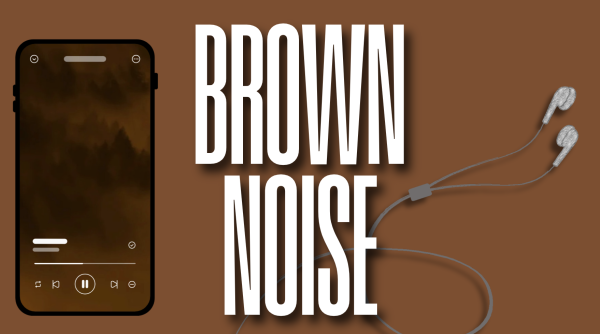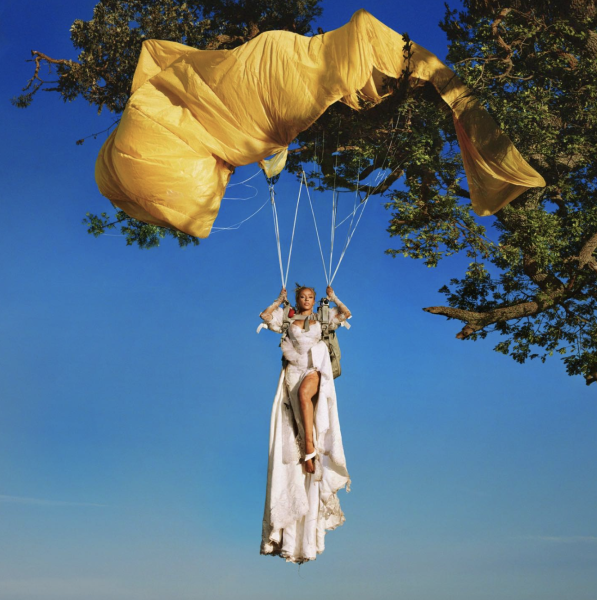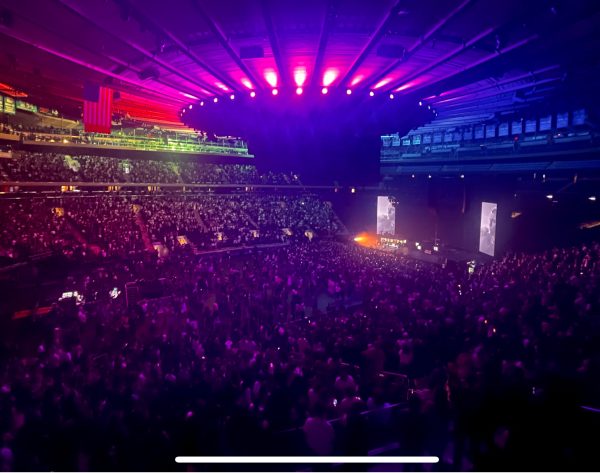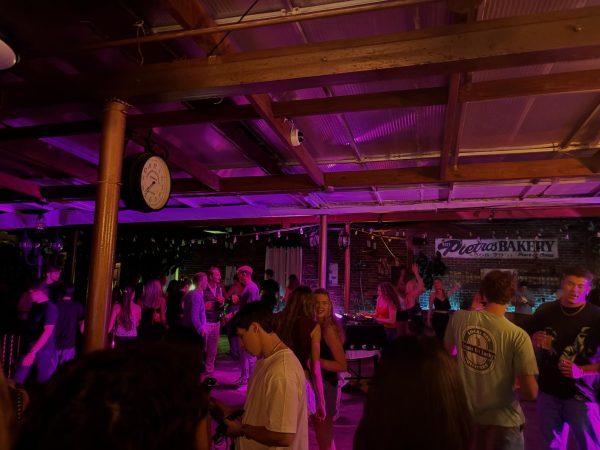A Conversation with Canadian Dream Pop Goddess Floor Cry
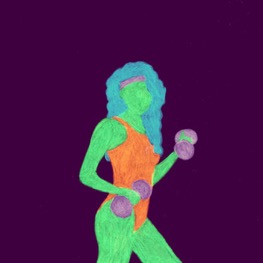
Felicia Sekundiak, better known by her stage name Floor Cry, gained popularity through her songs on SoundCloud and YouTube. (Courtesy of Felicia Sekundiak)
By Olivia Nangle
I think I speak on behalf of the entire country when I say we will gladly trade Justin Bieber in exchange for Floor Cry. Thank you and welcome to my Ted Talk.
Floor Cry is the dream pop solo project of Winnipeg-based singer-songwriter and ultimate cool girl Felicia Sekundiak. Her first sign of success in the DIY scene came from a SoundCloud following and YouTube exposure from channels like Thelazylazyme. She quickly took her singles, a mixture of covers and originals, to Spotify and Apple Music. Sekundiak’s stage name could not be any more fitting, as I often find myself quite literally on the floor crying to her music. Sorry, Felicia.
Floor Cry’s synth pop creations are filled with rich emotion and a rare form of relatability that somehow softens the blow of lost love. On her single “parents,” Sekundiak reflects on conflicting feelings of pain and yearning. Floor Cry croons, “how you been? / well I’ve been good / not doing anything like I should / I’d tell you more if I only knew I could.”
Her words leave a residual blitheness with the listener, a Floor Cry specialty. Her ability to convey the flurry of conflicting and often confusing emotions is unconventional and rather powerful. Sekundiak’s lyrics are not harsh reminders of the complications in life. Instead, they offer a glimpse into what moving on might feel like.
In “Strawberry Milkshake,” the gut wrenching line “I slept in really late / was dreaming of your face / you never smile around here anymore” is easily missed due to the song’s dance-inducing beat, a beautiful juxtaposition that allows listeners to indulge in their sadness but not wallow. Once again, this allows Sekundiak’s effortless talent to shine through her delicate poems.
Floor Cry is a one-woman show, and each original song is written, recorded and produced by Sekundiak herself (even the artwork is crafted from materials she has laying around at home). This holistically authentic process leaves her vulnerable in every capacity, and she absolutely owns it. Sekundiak is a multifaceted artist on the rise who is as relatable as she is talented.
The Fordham Ram spoke with the talent behind Floor Cry for a candid conversation about the DIY scene, meaningful connections made via social media and her effort to make sense of life on Earth through songwriting.
The Fordham Ram: So, how did you come up with the name Floor Cry?
Floor Cry: It kind of started as a joke, but I just stuck with it. When I started putting out music, I thought I should come up with some kind of stage name because my full name didn’t stand out very much for me and I wanted to create an identity for my music. I was trying to come up with names, but there are so many that have been taken … like I would type it in Bandcamp, and a ton of bands would pop up.
I even came up with a list of ideas; so many were taken, or I just didn’t feel as though they were a good fit for my music or self. One day I was listening to a record while laying on my floor, and the name just popped into my head. I thought it was funny and ended up sticking with it.
TFR: What’s your songwriting process like?
F: It’s honestly different every time. With collaborations, sometimes it starts out with someone sending me an instrumental. Then I’ll write a melody and some lyrics and then said it back. We’ll go back and forth. Sometimes I add instruments, sometimes not. With my own stuff, I’ll just find a beat, melody, or chord progression that I like so I have the basic instrumental made, and then I’ll listen to it a lot, especially when I’m just doing things around the house or studying, and eventually I just end up humming a melody.
From there I write lyrics. That’s the process with a lot of songs actually. For “I’ll Be Around,” I had that instrumental finished, and then I had a different song structure, but I just changed my mind one day and ended up completely redoing the structure of the song with the lyrics and everything.
Other times, I’ll think of some lyrics I like, save them in my phone and then build off of that, go back to them later and write it like a poem and come up with a melody. Whenever I record something, it always ends up sounding much different than I originally heard it in my head. I think it’s important to give yourself room to grow and give songs room to breathe when you’re recording because sometimes they end up sounding better than they would have if you tried to stick to how you wanted it in the beginning. That’s basically my process. It can be different with each song, but more often than not I start out with a basic instrumental and go from there.
TFR: When did you first start writing and recording your own music?
F: I started writing songs when I was seven or eight, but I doubt they were very good! I think I started posting original songs in 2013. Before that, I was posting covers to my SoundCloud in high school. I was pretty shy and didn’t tell anyone, but I think someone found my SoundCloud from my school and told me they really liked my cover of “Skinny Love,” so I decided to go public. I eventually started posting more covers and worked up the courage to post my first song. The very first song I ever posted on my own is called “Mercurial.”
It was more folky which is the kind of music I first started making. From there, I changed my style significantly. I think in 2016 I started releasing music more frequently, like my album Caterpillar Daydream. The Fountainhead EP was the very beginning, too. I feel like my style has changed a lot since then, mainly because I learned more about instruments, recording and mixing.
TFR: How do you choose to release your music?
F: I’m actually super impatient! So a lot of people will tell me how they’ve finished a song a year ago and are waiting to release it for their album, but with me, before I even finish something I’m hyping it up on Instagram. Then once it’s done I put it out right away. The thing is I wanna put out an album by April of next year, so I have to practice keeping some songs to myself and not releasing them. Otherwise it’s gonna be an album of songs that everyone’s already heard. So, I’m thinking “I’ll Be Around” will be on it, but I also want to have around seven unreleased songs, so that’s gonna be hard for me, especially because I have a bunch of things that are about halfway done, and I’m gonna have to not release them.
TFR: How do your lyrics come together?
F: Back when I first starting writing music, sometimes I would make up scenarios, mainly because I was in high school when I started writing the earlier songs and didn’t have a ton of life experience. But now I mostly write from personal experience and just about my life. It’s a way for me to be able to turn negative experiences and things that hurt me into a positive thing because it’s in song form, and it might help someone else that’s listening to it going through a similar experience. That’s the cool thing about music.
You can really interpret the lyrics in your own way and apply it to your own life. That’s what my main driving force behind making music is. I wanna be able to help people get through their own struggles because that’s what it’s always done for me. The first thing I always do when I’m upset or happy is put on music just to go with my mood or what I’m going through at the time. Sometimes I write little snippets of things in my phone and build a song around that but my music is mostly about my life or something that’s going on in the world.
TFR: I know you also do your own artwork for your releases. What’s the creative process like for that?
F: I started out doing everything with construction paper, especially with my earlier releases. I’ve just always liked drawing and painting, so I decided to use construction paper I had laying around. I use pencil crayon more now. The artwork for my releases is always sort of random, and I usually make it after a song is finished. For “I’ll Be Around,” I always thought it sounded like a work out type beat, so that inspired the artwork of the girl lifting weights. Basically, I scan the art and then deep fry it on my computer to boost the colors.
TFR: Who has been your favorite artist to collab with?
F: I honestly can’t pick because all of them have been so enjoyable! I’m still really good friends with everyone I’ve collaborated with, and we still keep in touch. The lasting friendships have been one of the most rewarding parts of collaborations.
So, I don’t have a favorite collaboration, but I can tell you my least favorite collaborations. I don’t even know if I could call it a collaboration, but I think it was back around 2016 when I first came out with the Caterpillar Daydream EP. This DJ messaged me wanting to remix “fangs.” I was super hyped because this guy said he was on Tiesto’s label… Back then I didn’t get much exposure and didn’t have a following or anything, and no one had ever reached out to me to remix anything so I agreed and signed a contract. I was promised 50 percent of the revenue, but what ended up happening is he remixed my song, didn’t credit me for it, and just put me as a feature.
I sent him emails, and he never got back to me, and now there’s this house remix of “fangs” online. I learned my listen though. I need to be very careful about contracts and people that want to remix my stuff. The funniest thing is he asked me again a year later to remix another song, and I was like “really dude?” but I learned my lesson to be careful. Luckily, it was an early song that I didn’t plan on doing much with. But now I’m selective about who I collaborate with, and everyone I do collab with is really supportive. Every experience I’ve had since that one has been really good. So people will be like, “oh we’ll do a song for my album and a song for your album.” It’s a very mutual thing and so rewarding.
TFR: How has the music scene in Manitoba impacted your style?
F: The scene here is great in that it’s very diverse and there are tons of talented people. I think I’ve been influenced by the dream pop scene here especially at the first local shows I went to because they were dream pop bands. That’s the kind of music I started making early on.
TFR: Do you see yourself staying in Canada after college or do you see yourself moving elsewhere?
F: I went to California and I really liked it there. I feel like it might be a good fit for me. If I were to stay in Canada, British Columbia might have more of an artsy scene. My friend Tristan who makes music as Diamond Cafe plays there. We’re probably gonna do a song together eventually!
TFR: What’s it like being so involved in the DIY/dream pop community?
F: It is! It’s just so supportive and uplifting. We all just wanna see each other do well, which is nice and so many friendships have formed out of it too. The guys in Vansire are also just some of the most genuine people I’ve met. They have a lot of experience and are really knowledgeable about everything. I can message them whenever about questions or advice, and they always respond and are so nice and supportive.
We talk pretty often, and when any of us release new music, we always congratulate each other. They’re just all really supportive, and those are the people that deserve to make it big because they’re doing music for the right reasons, not just for popularity or status or anything. Mellow Fellow actually found me when I had hardly any followers and reached out about working together. That meant a lot to me because he didn’t care about it benefiting him.
A lot of people will reach out for collaborations because they see you have a lot of followers, but he really just liked my music and wanted to make something with me. He’s just a genuine person who’s willing to work with anyone if he likes their music. I also think it’s really great to support anyone involved in the music industry. I love to do interviews and talk with people doing anything artistic.
TFR: Tell me a little bit about your friendship with the guys in Vansire.
F: I’m really good friends with them! They actually don’t live that far from me. I think they’re about an eight hour drive from me, and it doesn’t seem that far. I told that to someone, and they laughed. But they’re just in Minnesota, and I’ve driven to Minneapolis before. We were gonna meet up recently because they’ve driven through Winnipeg before, but it hasn’t worked with our schedules, so it hasn’t happened yet. I think we’re going to work on another song together because we already started something.
TFR: I think it’s really amazing how despite the differing music scene in Canada, you’ve found a community of dream pop artists to collab with through social media.
F: For me, I think the internet is the single most important tool because all these opportunities I get have been through the Internet. I’m gonna collab with a local artist called Lev Snowe, but so far my collabs have been with people who don’t live near me. We’ve met through SoundCloud, YouTube and places like that. I met Vansire through Thelazylazyme channel on YouTube. We both had our songs posted on there, and then we ended up messaging each other a few days later because we both liked each other’s music. We started talking and made that song “Nice To See You.”
TFR: How did “Nice To See You” come together?
F: The guys in Vansire sent me an instrumental and said, “If you can think of anything for this, send it our way,” and then I played it while I was doing stuff around the house or in my car and eventually just started humming a melody. Then we went back and forth with that.
TFR: Do you think you’ll play with those guys in the near future?
F: Yes, hopefully soon! A lot of people wanted them to play “Nice to See You” when they were on tour and I really wanna play with them.
TFR: I know you did a cover of The Cars’ “Drive.” Are they a big inspiration for you?
F: The ‘80’s are actually my favorite music era. I’m a huge fan of The Cars, Duran Duran, A Flock of Seagulls, Cocteau Twins, Prince, Tears For Fears. There’s such a big list of amazing artists and bands who were in their prime in the ’80’s. They’re definitely my biggest inspirations when it comes to making music. I like to make covers to pay tribute to those people and because it’s fun. You know, you have a favorite song, and you’re always singing it, so you put your own twist on it!
TFR: I think there’s something to say about the vulnerability of your music that makes it so relatable, and people connect with it because of how honest you are.
F: It was definitely hard at first to open up because I’m a pretty shy person. Music is the only way for me to do that. Even just describing how I feel is difficult. If someone asks me how I feel about something, I have a hard time describing it or putting it into words, but then I can write a song about it, and it makes sense.
TFR: Who do you make music for?
F: I make music to help myself come to terms with things and navigate life. No one knows why we’re here (on Earth), so it’s a way of making sense of things. I always wonder what my life means or how I’m going to make some little mark on the world and make my life meaningful. So music is a way for me to navigate that. I also make music for other people so they don’t feel so alone. I feel like music is a way to bring everyone together while we’re all trying to get through life and experience things. So I write with other people in mind too, because I want to be able to help people who are maybe going through a different experience.
END
Sekundiak’s effortless ability to finesse words and beat cohesively allow you to feel as though she’s an old friend who is showing you her music. Her hits are for you to play on repeat endlessly.
Floor Cry doesn’t have any official plans for an album or tour yet, but hopes to have an album out by Apr. 2019. The Fordham Ram cannot wait to hear her next drop.
In the meantime you can check out Floor Cry’s Bandcamp and SoundCloud for old and new bops and stream her latest single “I’ll Be Around” here.









































































































































































































